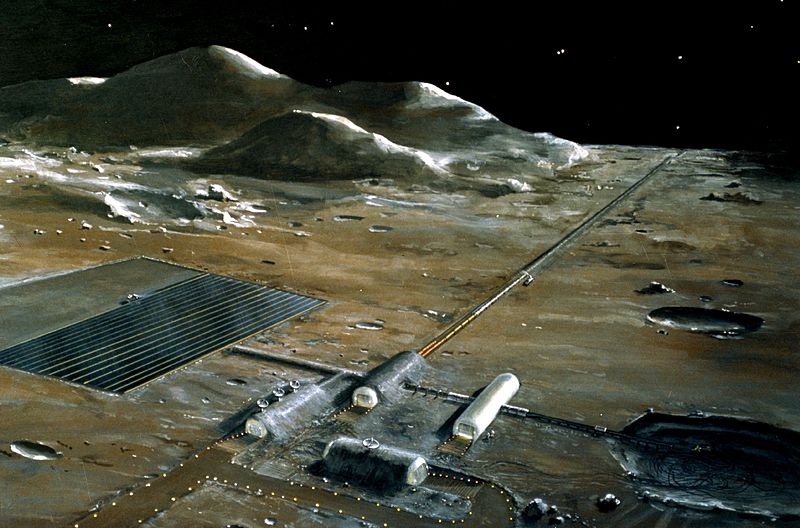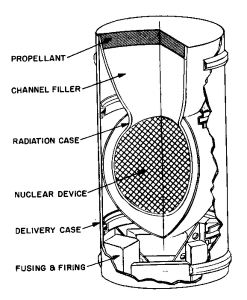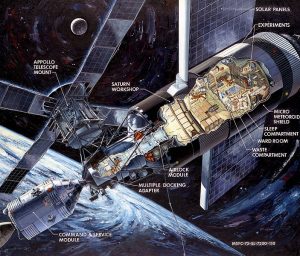
Beginnings
As humanity’s presence in space grows, so too does the potential for conflict. The militarization of space – “space war”, if one prefers – was once the realm of science fiction, but is rapidly becoming a reality that promises to reshape global security dynamics in the 21st century.
The concept of space as a military domain is not new. Since the launch of Sputnik in 1957, nations have recognized the strategic importance of space. Early military applications focused on reconnaissance and communication satellites, which have played crucial roles during the Cold War, and the wars of the 21st century. However, recent years have seen a dramatic acceleration in the development and deployment of military space capabilities.
Confrontation In Space
As far back as 1981, author G. Harry Stine, one of the founders of model rocketry in the United States, and a notable author of hard science and technology writings, as well as science fiction, laid down the basics of warfare in space in his book “Confrontation In Space“, defining the basic shape and dimensions of the battlespace, the most likely weapons that will be used, and outlining the early concepts of how combat in space would be waged.
There is no science fiction in this book, and no technobabble, just the hard realities of applying warfare “in the Black”, to reference a certain TV show, to the real world. Given the general nature of some of the space-war musings of the time that have since been declassified by official sources, Stine is a refreshingly sane and soberingly realistic voice.
The extent to which Stine’s work has influenced modern space battle planning is open to question; it should be a fundamental text, but given the current mission statement of the United States Space Force (USSF), that seems unlikely.
Today, the major players in space militarization are the United States, China, and Russia, with other nations like India and Japan also expanding their capabilities. These countries are investing heavily in a wide range of space-based military technologies. The United States, however, long one of the main innovators of space exploration, only established the USSF in 2019 as a separate branch of its armed forces, signaling the growing importance of space in military doctrine.
Current military space capabilities go far beyond simple reconnaissance. They include the creation and servicing of advanced communication networks (which underpins the basic operation of the internet), precision navigation systems like GPS and early warning systems to detect ballistic missile launches. However, in recent years, China, Russia, and the United States have all demonstrated anti-satellite (ASAT) weapons capabilities, raising fears about the vulnerability of critical space infrastructure, demonstrating the ability of national actors to destroy satellites at will.

Technological advancements are driving this new space race. The miniaturization of satellites has made it easier and cheaper to launch large constellations of small satellites, enhancing resilience and coverage, as well as opening the potential for true “surge capacity”, to rapidly launch replacement satellites to replace combat losses. In addition to rapid reconstitution of a damaged communications network, the need to replace combat-lost GPS satellites is a key function of satellite surge capacity, because most military vehicle and targeting systems rely on GPS for navigation in addition to combat. Reusable launch vehicles, pioneered by companies like Elon Musk’s SpaceX, have dramatically reduced the cost of accessing space, which has lowered the barrier to entry for military space programs.
Throwing Rocks
Fundamental to actual warfare in space is the development of dedicated weapons for use in the theater. While actual weapons have been fired in space, these weapons go far beyond lasers, high-powered microwave systems, or even the darling of recent science fiction shows, the “particle accelerator“. In fact, the most lethal weapons in space will likely be rocks: “mass drivers“, essentially an electromagnetic catapult, can accelerate iron-rich space rocks (as small as pebbles) to very high velocities, far faster than conventional bullets or cannon rounds. A hit from a very high-speed projectile of any nature could be a catastrophic damage source to any spacecraft, as current launch systems severely limit the weight of spacecraft, which in turn limits the amount of armor a vessel can carry, assuming that current armor would even be effective. While still largely theoretical, such weapons could revolutionize space warfare, and require careful thought and planning to employ.
In response to these emerging threats, nations are working to develop countermeasures and defensive strategies; most of these, it much be noted, are ‘passive’ in nature, as active countermeasures are currently ill defined. The strategies currently in development include hardening satellites against attacks, improving space situational awareness to detect threats, and developing rapid launch capabilities to quickly replace damaged or destroyed satellites.
Bright Light Boom
There is also the possibility – perhaps “likelihood” – that someone will eventually detonate a nuclear weapon as part of an actual battle in space. The main considerations in using these weapons in space begin with exactly where they are detonated. If a large enough warhead were detonated at a suitable altitude above the surface, it could – in theory – generate an electromagnetic pulse (EMP) sufficient to overload and shutdown, if not outright destroy, any large-scale power grid. This phenomenon was first recognized in 1962 during the Starfish Prime test, when an unexpected EMP wave from the detonation knocked out power to parts of the city of Honolulu, Hawaii.

Aside from the well-known, at least in a broad sense, radiation effects (which would likely be magnified in space, without an atmosphere to absorb them) and EMP concerns, the main damage-causing mechanism of a nuclear blast on Earth – blast effect, caused by the compression of the atmosphere by the detonation wave – would not be present, as there is no atmosphere in space that can be compressed into a destructive force.
For all that, however, work on “bomb-pumped lasers” and other exotic warhead designs such as Project Casaba-Howitzer (which used a nuclear weapon to create a shaped charge from material vaporized into plasma by the blast), largely came an end – at least publicly – at the end of the 1980’s, as it was clear that the Soviet Union was dying, and that the prospect of all-out nuclear war had rapidly begun to fade.

As the possibility of actual open warfare in space continues to rear its head, it is a near-certainty that many of these old programs are being reexamined, using fresh data and better computer modeling…The possible side effects, however, remain.
Combat Logistics in Space Warfare
One of the most challenging aspects of space militarization is the issue of combat logistics. Unlike terrestrial warfare, where supply lines can be established and maintained relatively easily, space presents unique challenges for sustaining military operations.
The primary hurdle is the enormous energy requirement to launch materials into orbit. Every kilogram of supplies, whether fuel, ammunition, or replacement parts, comes with a very high price tag (over $2,000 per kilogram) and significant challenges to logistical load planning, in both loading and unloading at point of delivery. This makes traditional resupply methods impractical for sustained operations in-theater, as we understand the idea.
To address these issue, military planners are exploring several approaches. One concept is the development of in-orbit refueling capabilities. This would involve specialized “tanker” satellites capable of transferring fuel to other spacecraft, extending their operational lifespan and maneuverability.

Another area of focus is in-space manufacturing. Advanced 3D printing technologies – currently capable of making conventional ammunition-using select-fire weapons a factor in infantry combat – could allow for the production of spare parts or even small satellites directly in orbit, reducing the need for launches from Earth. Different avenues of research are exploring the possibility of mining asteroids or the Moon for resources, which could provide a sustainable source of materials and fuel for space-based operations.
Robotic servicing missions represent another potential tool in the box. These would involve unmanned spacecraft under direct, if remote, control, or completely autonomous systems guided by artificial intelligence, which would be capable of repairing, refueling, or upgrading other satellites or spacecraft, potentially extending their useful life and reducing the need for replacement of complete craft.
The concept of staging pre-positioned orbital depots is also being considered. These would be stockpiles of fuel, spare parts, and other critical supplies placed in strategic orbits, such as the Lagrangian points, ready to support military space operations as needed. In form, these might take the form of the old Skylab design, as – being the size of a 3-bedroom house – the design could hold a significant amount of material.

These logistical challenges and their potential solutions will play a crucial role in shaping the nature of future space warfare. The side that can most effectively sustain its space-based capabilities may gain a significant strategic advantage in any potential conflict extending into the space domain.
The Future
The future of space militarization remains uncertain, but several scenarios seem plausible. One possibility is the outbreak of a limited conflict in space, perhaps involving the destruction of key military or civilian satellites. This could have cascading effects on terrestrial military operations and civilian infrastructure.
Another scenario envisions the deployment of space-based weapons capable of striking targets on Earth. While technically challenging and currently prohibited by international treaty, such systems could offer significant strategic advantages.
A third possibility is the integration of space-based capabilities with terrestrial, air, and naval forces to create a seamless, multi-domain military force. This could enhance military effectiveness but also increase reliance on potentially vulnerable space assets.
As we look to the future, it’s clear that space will play an increasingly important role in military affairs. The challenge for the international community will be to balance the legitimate use of space for national security with the need to prevent a destabilizing arms race in orbit. Failure to do so could turn the final frontier into the next battlefield.
ADDITIONAL RESOURCES
- G. Harry Stine (1981), Confrontation in Space
- Julian Thompson (1994), Lifeblood of War: Logistics in Armed Conflict
- Thomas Ricks (2012), The Generals
- James F. Dunnigan (2003), How To Make War, 4th Edition
- James F. Dunnigan (1991), Shooting Blanks








